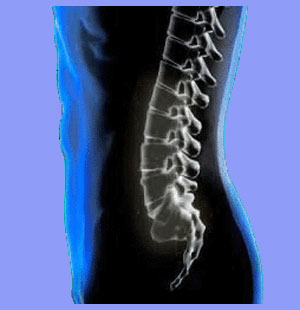
Holistic sciatica treatment describes methods of care that treat the whole patient, instead of just focusing on minimizing the specific symptoms of low back, buttocks and leg pain. Essentially, holistic therapies are generally thought to benefit the overall wellness of the patient, instead of just treating the symptoms of a particular condition. Furthermore, holistic care generally employs techniques that are purely constructive and healthy, shying away from invasive or pharmaceutical approaches to treatment.
Many patients write to us looking for advice on holistic methods of treating their sciatica. However, it is clear from these letters and emails that the term “holistic” means different things to different people. Therefore, we have written this patient guide to provide sensible answers to many of the common questions about natural and holistic care modalities. If you have been considering holistic care as being preferable to your current path of sciatica treatment, then this discussion is perfectly tailored just for you.
Explanation of Holistic Sciatica Treatment
Holistic care does not necessarily mean that the treatment provided is all-natural or organic, although in most instances, these truths also apply. What holistic truly means is that the therapy provides general benefits to overall health and wellness, instead of just treating the pain and neurological deficits associated with lower body radiculopathy, also called sciatica.
Holistic sciatica treatment refers to therapies that treat the entire individual, not just the condition, or the physical health, but also encompassing remedies directed at mental, emotional and social aspects of the problem, as well. In essence, holistic treatments will not leave out any aspect of life from the healthcare equation. True holistic care will focus on providing complete mindbody health for humans living within society.
This is why the definition of holistic is confusing to many patients. Some people have pursued holistic care, but have only received treatments that tend to treat the physical body alone, neglecting the societal, cognitive and emotional aspects of the pain syndromes. Other patients have received care that did provide some degree of psychoemotional support, yet the physical therapies themselves focused on managing pain, rather than enriching overall wellness.
When you try to apply the term holistic to modern health care practices, you will find few that actually fit the truest definition, leading to the general confusion about holistic care.
Partially Holistic Treatment Options for Sciatica
Most modern health practices that market themselves as being holistic really only fit the definition partially. Most of these practices concentrate on the body, with little or no inclusion of social or psychoemotional therapy. Of course, the way a therapy is delivered can drastically change its focus, and some caregivers will certainly make more effort than others to provide a truly holistic experience. These healers will always inquire about the overall health issue, rather than just narrowly treating a particular condition, with the addition of secondary and unsubstantial references to general health of mind, spirit and body. Some of the best examples of partial holistic care include any or all of the following therapies delivered in their classic form, without extra emphasis on the psychoemotional and social issues of pain, disease and health:
Massage is certainly physically holistic and does provide relaxation and calming effects. However, most massage therapists do not employ psychoemotional or societal therapies that can help patients improve these often overlooked aspects of health.
Reiki can be considered holistic and may actually focus on more psychological and emotional problems in certain reiki circles, especially those arranged in conjunction the mindbody therapy.
Acupuncture and acupressure are mainstays of Traditional Chinese Medicine, which is a system of healthcare that does seek to address multiple aspects of health simultaneously. However, in modern application, the focus is virtually always on physical health, rather than full comprehension and appreciation of the role played by the mind in general wellness.
Some types of physical therapy include cognitive and emotional therapies to help patients to banish pain and overcome their pervasive fear of exercise. While not holistic in every regard, these methods certainly do provide a full range of physical benefits to recipients.
Knowledge therapy, including facets like EFT and pain coaching, definitely focus on the cognitive and emotional parts of pain, but do little to address physical characteristics. In fairness, the fundamental principle of knowledge therapy consists of a refusal to address and indulge the physical, in favor of the psychological, since the anatomy is said to be a victim of the pain and not a cause of it in any way.
Chiropractic is certainly holistic in a physical sense, but most practitioners do not spend adequate time with psychoemotional work to truly qualify as overall holistic healers. However, among modern health specialties, chiropractic comes very close to the truest holistic definition, when caregivers do focus on mental and emotional work to complement their spinal manipulations and other services.
True Holistic Sciatica Treatment
Truly holistic care for sciatica is usually best achieved utilizing a combined care approach to treatment. This way, the patient is completely in control of each aspect of their therapy and can make absolutely sure that every aspect of their health is being adequately addressed and optimized. Some of the best inclusions for this type of program include chiropractic, massage, exercise therapy, meditation, introspective journaling, life coaching, knowledge therapy and some form of constructive pain management, such as acupuncture, for acute symptoms.
Pursuing this level of holistic treatment can be a full time job, so it is no wonder that many patients choose a particular route instead. However, just remember that although many physical methods of care must be provided by professionals, some can be managed at home, using self-care or amateur care techniques, like self-massage and massage given by a loved one. Additionally, virtually all the mindbody applications of holistic treatment can be self-applied and actually work best in this manner.





